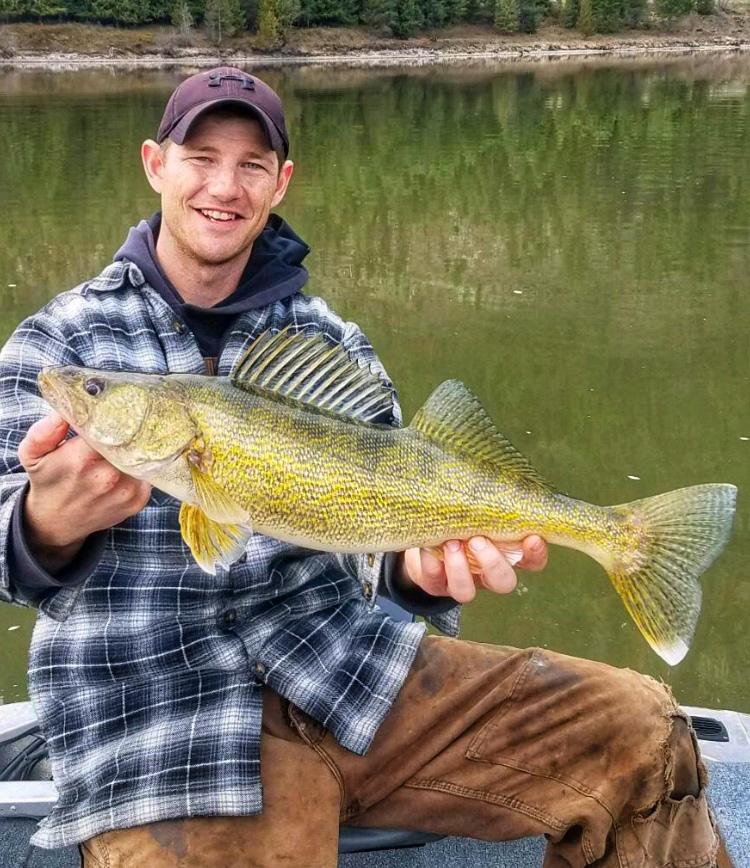
3 minute read
Exploring Diverse Angling Opportunities in NW Montana
written and photographed by Mark & Jeannette Smith
As summer starts to fade, the days grow shorter and a certain magic settles on the waters in NW Montana. It’s the season of fall fishing. As anglers, we eagerly embrace the arrival of autumn, with summer crowds dissipating and water temperatures cooling down, the conditions align perfectly to welcome the giants of the water.
Advertisement
When it comes to fly fishing, the Clark Fork River is a popular destination for anglers. However, as you move downstream and encounter the reservoirs created by man-made power generating dams, new opportunities arise. These dams infuse the waters with steady current, making a “fish factory,” if you will, producing consistent numbers of game fish year after year. The river feeds the Noxon Rapids Reservoir, a staggering 38 miles of boatable water, over a mile wide in some spots. It offers anglers an expansive playground to pursue their passion. Continuing downstream, the Noxon dam feeds the “river-like” Cabinet Gorge Reservoir, stretching
18 miles west to the Idaho border. The journey ends with the river emptying its contents into Lake Pend Oreille.
These flowing bodies of water are known for their large population of gamefish with picturesque views in all directions. Popular targets include thriving populations of both small and large mouth bass, providing endless fun for anglers of all skill levels. In addition, these waters are also home to Northern Pike, a predatory species known for their voracious appetite and aggressive strikes. These toothy critters often put up a fierce fight, making them a favorite target for anglers seeking a challenge. The angling opportunities extend even further with the elusive walleye, a highly sought-after game fish known for its delectable taste and elusive nature. Targeting walleye requires patience, finesse, and a deep understanding of their habits, making the catch even more gratifying. Trolling, and casting lures from a boat, as well as fishing from shore are highly effective techniques. These diverse fishing methods offer anglers the opportunity to adapt to different conditions and target a variety of fish species.
Trolling involves dragging lures or bait behind a boat, allowing anglers to cover a larger area and search for actively feeding fish. The Noxon Rapids Reservoir and the Cabinet Gorge Reservoir provide ample space for trolling, enabling anglers to explore various depths and locations. Whether targeting trout, bass, pike, or other sought-after species, trolling is an excellent technique to entice strikes from cruising fish.
Casting lures from a boat or from the shoreline is another productive technique in the reservoirs. Anglers can utilize a wide range of lures, such as spoons, spinners, crankbaits, or soft plastics, to imitate the movement of prey and attract predatory fish. By casting towards structure, submerged vegetation, or areas of current, anglers increase their chances of enticing strikes from a truly trophy sized fish.
Don’t underestimate the potential of fishing from shore in the reservoirs. Many miles of publicly accessible fishing spots and campgrounds along the shoreline provide opportunities for anglers to cast their lines and connect with fish without the need for a boat. Focus on areas where the shoreline transitions from shallow to deeper water or where natural structures offer cover. By carefully selecting your fishing locations and employing effective casting techniques, you can have a successful fishing experience.
Fishing in the fall season can often provide the best opportunities in the reservoirs along the Clark Fork River. As the weather cools down and the water temperature begins to drop, various fish species become more active and aggressive in their feeding behavior. This increased activity can put a mess of tasty morsels in the frying pan this fall.
During the fall, fish tend to feed more heavily in preparation for the upcoming winter months. They are actively searching for food sources to build up their energy reserves. This heightened feeding activity presents anglers with increased chances of encountering trophy-sized individuals that are more willing to strike at bait or lures.

Additionally, the changing seasons bring about changes in fish behavior and patterns. Cool water temperatures and shorter daylight hours trigger migrations and shifts in location as fish move to different areas in search of food. Understanding these seasonal movements and adapting your fishing tactics accordingly can greatly increase your chances of landing more fish.
It’s worth mentioning that specific creeks along the Clark Fork River may have different fish species and regulations, so it’s important to check local fishing regulations and consult with local guides or fishing experts for the most up-to-date information on target species, techniques, and season-specific strategies.
No matter what technique you choose, the fall season presents a golden opportunity to enjoy the bountiful waters downstream of the Clark Fork River. Take advantage of the increased feeding activity, changing fish behavior, and the scenic beauty of the autumn landscape for an unforgettable fishing experience.
Tight lines and happy angling!
- Mark Smith



